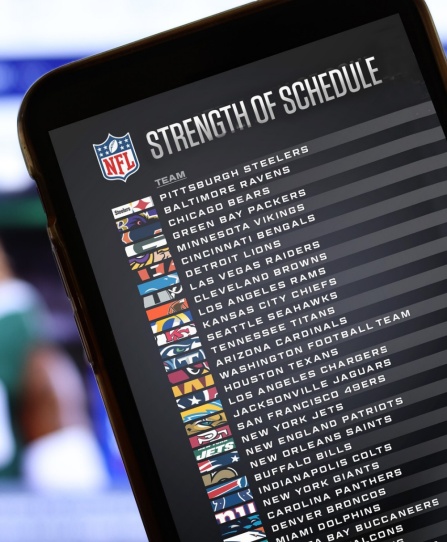NATIONAL FOOTBALL LEAGUE
NFL optimizes team schedules with UB supercomputers
Coordinating game opponents, dates, times and locations to fill the National Football League’s 18-week regular season means juggling team travel, stadium limitations, television network contracts, fan expectations and much, much more. With help from UB’s computational research experts, the league has fair scheduling down to a science.

How the National Football League collaborates with UB
CHALLENGE & OPPORTUNITY
Infinite factors complicate football scheduling
For the NFL, scheduling its 280 games per season is an extremely complex task. Crafting a fair calendar goes beyond “who plays who” to factor in individual team rest and readiness considerations, like bye week placements and avoiding consecutive road trips, coast-to-coast travel weeks or long pauses between division matchups. Schedules need to account for venue limitations posed by other large events within a host city, plus stadium schedules pre-booked with concerts, college bowl games and Major League Baseball. Broadcast contract obligations and at-home audience demand for a quality lineup of televised games each weekend further complicate the process.


SOLUTION & OUTCOME
Game calendar gets a fairness facelift
Sparked by suspected, and later confirmed, schedule disadvantages plaguing UB’s hometown team, the Buffalo Bills, researchers at UB outlined a mathematical approach for the NFL to help solve this complex challenge. They modeled the problem as a large-scale mixed integer linear programming (MILP) problem, which considers over 10,000 variables and constraints, growing in complexity as the scheduling season evolves and new conditions are added.
The NFL starts by affixing 40 to 50 key games into set time slots based on network and stadium requirements, which gives the MILP software a starting point to fill in the rest of the schedule around them. Over 100 programmed computers strategically seed games in thousands of trials, which run eight to 12 hours overnight for months testing infinite solutions to create schedules that reduced the number of NFL fairness penalty points by 20 percent in the first year alone.
UB SUPPORT
Computing solves complexities
The NFL is able to play a more equitable schedule of games thanks to UB’s world-class computing infrastructure, backed by computational scientists and software engineers who are experts in modeling and simulation, machine learning, data analytics, parallel computing, visualization and cluster management.







